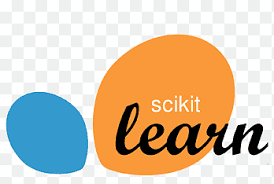
The ABSOLUTE ESSENTIALS of scikit-learn every data scientist should know
(Introduction + Examples)
🧵Long Thread 👇👇
#MachineLearning #DataScience
(Introduction + Examples)
🧵Long Thread 👇👇
#MachineLearning #DataScience

✍️Introduction
- scikit-learn is one of the most famous python libraries for machine learning.
- scikit-learn allows you to easily build and train machine learning models through its simple and well designed API.
- However, I will try to simplify the API for beginners.
- scikit-learn is one of the most famous python libraries for machine learning.
- scikit-learn allows you to easily build and train machine learning models through its simple and well designed API.
- However, I will try to simplify the API for beginners.
1⃣ Estimators
- The process of learning parameters from input data is called "Estimation", and therefore any object that learns some parameters from data is called an "Estimator".
- The estimation process itself is performed by calling the fit( ) method of any estimator object.
- The process of learning parameters from input data is called "Estimation", and therefore any object that learns some parameters from data is called an "Estimator".
- The estimation process itself is performed by calling the fit( ) method of any estimator object.
Example 1: (fill missing values in an array)
Step 1
We have an array of numbers of shape (15,1) with sum null values.
Step 2
We use scikit-learn's simple imputer to impute (or replace) missing values with the mean of the array (strategy = 'mean')
👇👇
Step 1
We have an array of numbers of shape (15,1) with sum null values.
Step 2
We use scikit-learn's simple imputer to impute (or replace) missing values with the mean of the array (strategy = 'mean')
👇👇

Step 3
We estimate the mean of the array using the fit( ) method of the imputer object.
(As previously explained, fit( ) method is used to estimate a parameter, the mean in this case, from input data)
Step 4
We can access the learned parameter using the statistics_ attribute.
We estimate the mean of the array using the fit( ) method of the imputer object.
(As previously explained, fit( ) method is used to estimate a parameter, the mean in this case, from input data)
Step 4
We can access the learned parameter using the statistics_ attribute.
Notice that up until this point, we haven't actually replaced the missing values.
All we've done is calculate the mean of the array.
The next logical step is to use the learned parameter (the mean) to replace the missing values.
That's when transformers kick in.
All we've done is calculate the mean of the array.
The next logical step is to use the learned parameter (the mean) to replace the missing values.
That's when transformers kick in.
2⃣ Transformer
- A transformer is an estimator that can use the learned parameters to transform the data.
- The transformation process is performed using the transform( ) method.
- A transformer is an estimator that can use the learned parameters to transform the data.
- The transformation process is performed using the transform( ) method.
e.g., The simple imputer object in the previous example can use the learned parameter (the mean of the array) to replace the missing values in the array.
Example 1: (fill missing values in an array)
Step 1 : Step 4
Explained Above
Step 5
Calling the transform( ) method of the simple imputer object replaces missing values in the array with the mean of the array, and returns the new transformed array.
Step 1 : Step 4
Explained Above
Step 5
Calling the transform( ) method of the simple imputer object replaces missing values in the array with the mean of the array, and returns the new transformed array.

However, sometimes we need to use the parameters that the model has learned from the input data to predict the output of new data rather than transforming the data.
That's when we need predictors.
That's when we need predictors.
3⃣ Predictors
- A predictor is an estimator that can use the learned parameters to predict the output of new data.
A linear regression model is an estimator and a predictor as it can learn the parameters from the data (slope, intercept) and can predict the output of new data.
- A predictor is an estimator that can use the learned parameters to predict the output of new data.
A linear regression model is an estimator and a predictor as it can learn the parameters from the data (slope, intercept) and can predict the output of new data.
Example 2: (building a linear regression model)
Step 1
We have input data (X) and target labels (y).
Step 2
We create a LinearRegression object to build our linear regression model.
👇👇
Step 1
We have input data (X) and target labels (y).
Step 2
We create a LinearRegression object to build our linear regression model.
👇👇

Step 3
We call the fit( ) method so that our model that can the parameters (intercept, slope) that best fit the model to the training data.
Step 4
We can access the learned parameters using the intercept_ attribute (intercept), and the coef_ attribute (slope).
We call the fit( ) method so that our model that can the parameters (intercept, slope) that best fit the model to the training data.
Step 4
We can access the learned parameters using the intercept_ attribute (intercept), and the coef_ attribute (slope).
Step 5
We use the predict method to predict the output of a new input instance.
Note that we can also use the score( ) method to evaluate the accuracy of our predictions.
We use the predict method to predict the output of a new input instance.
Note that we can also use the score( ) method to evaluate the accuracy of our predictions.
Note:
Example 2 is taken from @aureliengeron's amazing book
"Hands-On Machine Learning with Scikit-Learn, Keras, and TensorFlow: Concepts, Tools, and Techniques to Build Intelligent Systems"
Example 2 is taken from @aureliengeron's amazing book
"Hands-On Machine Learning with Scikit-Learn, Keras, and TensorFlow: Concepts, Tools, and Techniques to Build Intelligent Systems"
That's it for this thread.
I know it's quite long, but learning these principles will make your life much easier when working with scikit-learn.
I know it's quite long, but learning these principles will make your life much easier when working with scikit-learn.
If you found this thread to be useful, kindly consider retweeting the first tweet, and for more content about
#MachineLearning and #DataScience, follow me
@ammaryh92
#MachineLearning and #DataScience, follow me
@ammaryh92
• • •
Missing some Tweet in this thread? You can try to
force a refresh





